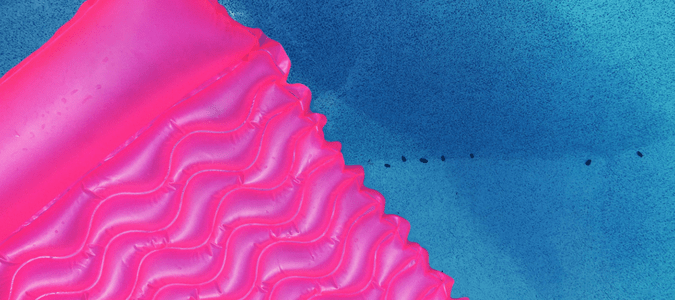
On a hot summer afternoon, it’s nice to take a dip in the pool for a brief respite from the southern heat. One day, your relaxation is interrupted by a sharp, stinging sensation. Startled, you quickly jump out of the water, then peer into your pool from the edge until you find them: water bugs.
Apparently, they sting. Or bite. Clearly, they need to go.
What should you do?
The first thing you need to realize is you’re likely to find all kinds of bugs and insects in your pool from time to time. Everything from spiders to caterpillars to ants can make their way into your pool water. Bugs are everywhere, and just like people, they can take a wrong turn and slip and fall.
These aren’t the kinds of bugs you need to worry about in your pool. While you certainly don’t want to end up swimming with a wasp, you also don’t have to fear they’ll take up residence where you swim.
The bugs that must be dealt with are the ones that see your swimming pool as an attraction. Either they want to hang out near this amazing source of water, or they want to live in it.
This post will largely focus on the second group–water bugs. But it’s worth taking a moment to talk about the first group as well, because it includes several annoying and even dangerous bugs. Namely, mosquitoes, midges, dobsonflies, mayflies and stoneflies.
Dobsonflies and midges bite. Mosquitoes carry diseases. All of them may potentially see your pool as an attractive place to lay their eggs.
Prevention and removal can involve treating your pool, investing in a good filtration system, or minimizing outdoor lights to avoid attracting them. Our technicians also have a number of options available to help with bigger mosquito problems.
What about the bugs that want to live in your pool though? Below, we’ll look at three swimming pool bug types and what to do about them: water boatmen, backswimmers, and springtails.
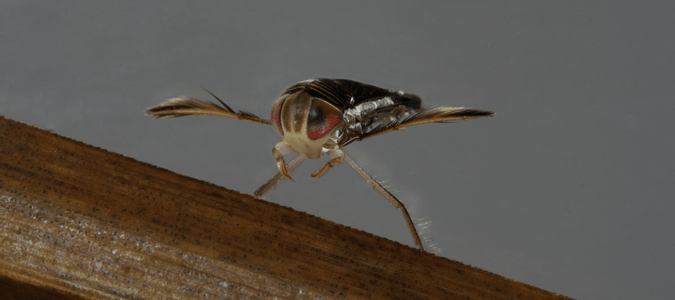
Water Boatmen Bugs: Should I Be Worried?
Generally considered beneficial insects, water boatmen are usually less than half an inch in length. They have long, flat, dull-colored bodies. Their forelegs have what look like oars on the ends. This bug’s mouthparts are mostly designed for sucking, though they feed on plant material and some have even been known to eat mosquito larvae.
These insects do not bite people, and they can help to keep your pool clean of detritus. However, there’s a problem even beyond the likely “ick” factor of swimming around with them in your pool. What is it? The fact that they can attract–and are often confused with–backswimmers.
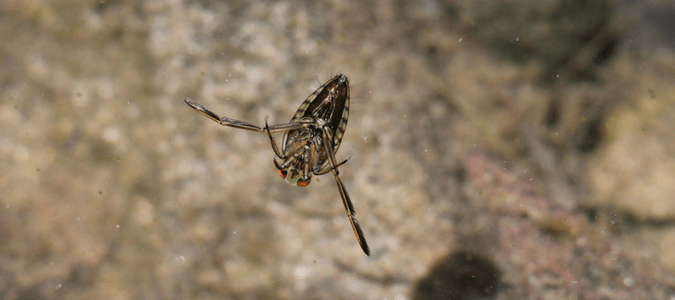
Backswimmer Bugs: Beware Of Their Bite
What’s the big deal with backswimmers? Quite simply, they bite. There’s a reason to avoid this bug: the bite feels a lot like a bee sting. Not exactly something you want when you or your family are trying to take a relaxing dip.
As mentioned above, people often confuse backswimmers with water boatmen, so it’s probably no surprise that they look fairly similar. Like water boatmen, they move around the water with oar-like legs. They have bodies that are elongated and roughly the same size (less than one-sixth of an inch). This insect’s coloring can also be similarly dull, but they have an additional trick to guard against predators: countershading.
What does that mean? Basically, these bugs blend in and are hard to see. It’s not camouflage, though, or the color-changing you probably associate with chameleons. Instead, backswimmers are colored so they blend in with their background, depending on the direction you’re looking at them. From above, the dark body blends in with the bottom of the ponds where they typically live. From below, their lighter backs mirror the water and sky.
So how do you recognize backswimmers and differentiate them from water boatmen? The biggest indicator is that they swim on their backs, while water boatmen swim “right side up.” For the most part, if you have one of these bugs, the other is likely to follow, because backswimmers feed on water boatmen, so you want to get rid of both if you spot one in your pool.
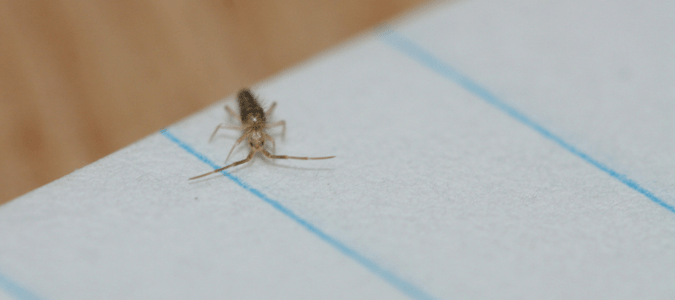
Springtails In Pool: Good News Or Bad?
Unlike backswimmers, which bite, and water boatmen, which are a problem because they attract backswimmers, springtails won’t really cause harm–at least not to you or your pool.
However, springtails can cause damage to seedlings and other young plants. If a lot of them fall into your pool, they can actually coat the surface, something most people find to be a gross nuisance.
You can recognize springtails by their small size–they’re only one-sixteenth of an inch!–and their ability to use their spring-like “tails” to leap into the air. Because of these two things, people have been known to confuse them with fleas, although these insects have no interest in you or your pets. Springtails do not bite, and they only want to live in moist areas and eat decaying plant matter.
How Do Water Bugs Get In Your Pool?
The answer to this question depends on the bug in question.
Springtails usually end up in pools if they’re looking for moisture and accidentally fall in. We’re only including them here in the list of “water bugs” because pool owners typically aren’t dealing with one or two of them every once in a while, but entire populations falling into the water and coating the surface. Yuck!
Water boatmen and backswimmers are different. They are attracted to the pool as a habitat and want to be in the water. How do they get in? Typically, one of two ways: either they fly in, or they are born there.
Yes, that’s right. Though they mostly stay in the water, both water boatmen and backswimmers have wings and can fly. What tends to happen is that adults living in a nearby pond will see the outdoor lights by a pool and fly over to investigate.
Once they get to your backyard, the pool will seem quite inviting, particularly if you have any leaves or other plant debris that has not be cleaned out. They will see this as a food source and note your swimming pool as a viable place to lay eggs. As we mentioned earlier, for backswimmers, the water boatmen will be the food source. If left untreated, you may soon have the problem of a whole generation of water boatmen or backswimmers.
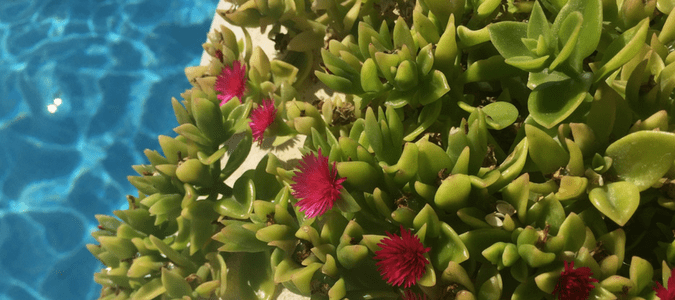
What Can You Do To Prevent (Or Get Rid Of) Water Bugs In Your Pool?
The answer to these questions depends on the type of bugs. Let’s start with springtails.
Preventing and removing springtails
Since springtails mostly live in moist soil and vegetation, the best way to keep them out of your pool is to keep your plants well away. Particularly if you have any plants or trees that overhang the pool, do what you can to trim them back or relocate them. It may look more lush and natural to surround your pool with plant life, but you’re basically asking for springtails to join you for a swim.
How do you get rid of springtails once they’re in the water? For better or worse, springtails that land in your water will die. This means that getting rid of them basically involves removing the bodies. Your pool filter should do the bulk of this work, as long as you keep it clean. Any bodies that are not filtered out will need to be manually removed by using a pool skimmer.
Preventing and removing water boatmen
The two things that draw water boatmen to pools in the first place are lights and plant matter, so they should be your focus where prevention is concerned.
Ideally, all outdoor lights should be at least 30 feet away from swimming pools, and you should use the lowest wattage possible that still provides enough light. Of course, we realize that some people may not be able to manage that extra 30 feet of distance and still light their pools, so the second part of prevention is even more important.
There are a couple of things you can do to keep plant matter out of your pool.
First, engage in “shock chlorination” twice a week. This will kill any organic material in the water. Just make sure you don’t swim in the pool again until the chlorination level is back to a safe level: between 1.0 to 3.0 PPM.
Next, use algaecide after the chlorination is back to a safe level. This step will kill any algae in the water. The directions on the product should guide you in how much to use for your pool.
After about 12 hours, brush and vacuum the pool to clear away any dead algae, bugs and other types of organic material. Along with skimming, you should do this on a regular basis. If you can spend 15 minutes a day cleaning your pool, you will be making a big difference in keeping your water clean and safe.
Preventing and removing backswimmers
Much of the tips used for water boatmen can be applied to backswimmers. The biggest thing to remember is that “food” for backswimmers is other bugs themselves. If you remove other bugs, it will help a lot with any backswimmer problem you have.
ABC Can Protect Your Pool From Pests
Fifteen minutes a day may not sound like much, but as any pool owner knows, trying to stick to a daily, regimented cleaning schedule is not easy. Moreover, you need to remember that we’re talking about the amount of time you should be spending regularly–after you’ve already dealt with any water bug problem that you might currently have. To deal with the issue, you’ll be investing a lot more of your time and energy in the beginning. The pool cleaning professionals from ABC Home & Commercial Services have been helping pool owners deal with frustrating and dangerous pests for decades. We know what it takes to not only get your water clean, but keep it that way.
